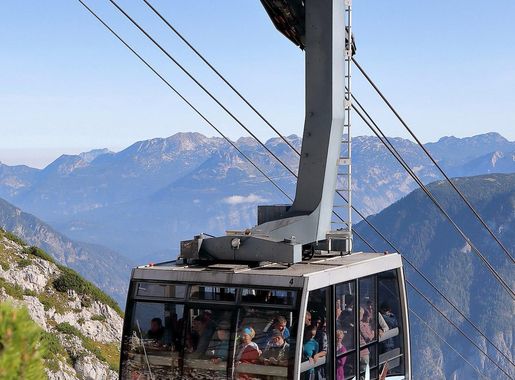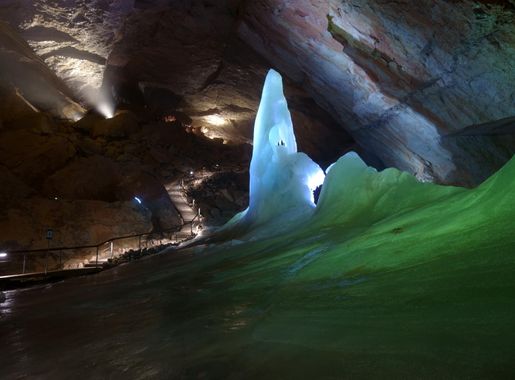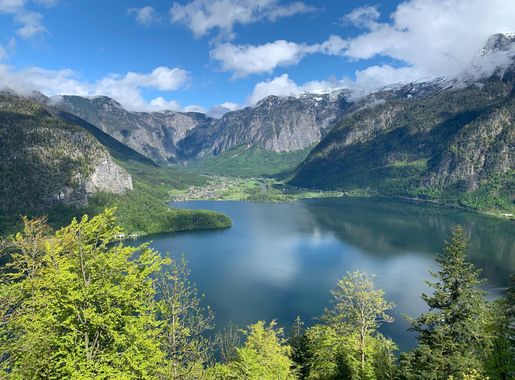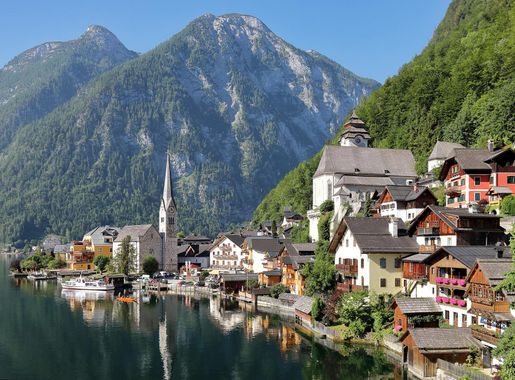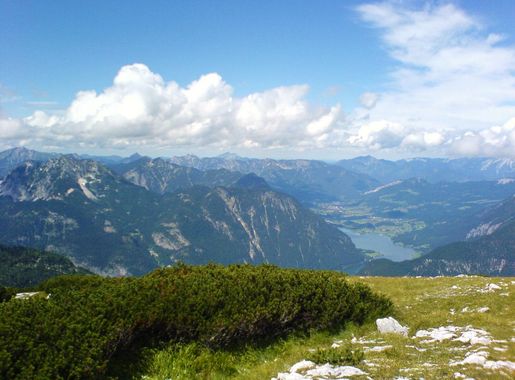
The Majestic Dachstein Mountains: Austria's Alpine Gem
Discover the Dachstein Mountains in Austria, where towering peaks, serene lakes, and ancient glaciers create the perfect alpine adventure year-round.
The Dachstein Mountains, nestled in the heart of Austria, offer a breathtaking escape into nature's wonderland. This alpine paradise is renowned for its dramatic peaks, pristine lakes, and expansive glaciers, making it a haven for outdoor enthusiasts and nature lovers alike. Whether you're a seasoned hiker or simply looking for a serene retreat, the Dachstein Mountains provide a picturesque backdrop for an unforgettable adventure. One of the highlights of the Dachstein region is the Dachstein Glacier, which attracts visitors year-round with its stunning ice formations and sweeping views. The glacier is accessible by a state-of-the-art cable car that whisks you up to the summit, where you can enjoy panoramic vistas and explore the Ice Palace, a series of ice caves carved deep within the glacier. For those seeking a thrill, the Dachstein Skywalk, a glass observation deck perched over a 250-meter drop, offers an exhilarating perspective of the surrounding landscape. In addition to its natural beauty, the Dachstein Mountains are steeped in cultural heritage. The charming town of Hallstatt, a UNESCO World Heritage site, is nestled on the shores of Lake Hallstatt and offers a glimpse into Austria's rich history. Wander through the narrow streets, visit the historic salt mines, or take a boat ride on the lake to fully immerse yourself in the region's timeless charm. With its unique blend of adventure, tranquility, and cultural significance, the Dachstein Mountains are a must-visit destination for any traveler to Austria.
Local tips in Dachstein Mountains
- Visit early in the morning to avoid crowds at popular attractions like the Dachstein Glacier and Skywalk.
- Pack layers of clothing, as weather in the mountains can change rapidly.
- Purchase a combo ticket for the cable car and Ice Palace to save money.
- Don't miss the opportunity to visit Hallstatt, especially for its picturesque setting and historic salt mines.
- Check local hiking trail conditions before setting out, as some trails may be closed due to weather.
The Majestic Dachstein Mountains: Austria's Alpine Gem
The Dachstein Mountains, nestled in the heart of Austria, offer a breathtaking escape into nature's wonderland. This alpine paradise is renowned for its dramatic peaks, pristine lakes, and expansive glaciers, making it a haven for outdoor enthusiasts and nature lovers alike. Whether you're a seasoned hiker or simply looking for a serene retreat, the Dachstein Mountains provide a picturesque backdrop for an unforgettable adventure. One of the highlights of the Dachstein region is the Dachstein Glacier, which attracts visitors year-round with its stunning ice formations and sweeping views. The glacier is accessible by a state-of-the-art cable car that whisks you up to the summit, where you can enjoy panoramic vistas and explore the Ice Palace, a series of ice caves carved deep within the glacier. For those seeking a thrill, the Dachstein Skywalk, a glass observation deck perched over a 250-meter drop, offers an exhilarating perspective of the surrounding landscape. In addition to its natural beauty, the Dachstein Mountains are steeped in cultural heritage. The charming town of Hallstatt, a UNESCO World Heritage site, is nestled on the shores of Lake Hallstatt and offers a glimpse into Austria's rich history. Wander through the narrow streets, visit the historic salt mines, or take a boat ride on the lake to fully immerse yourself in the region's timeless charm. With its unique blend of adventure, tranquility, and cultural significance, the Dachstein Mountains are a must-visit destination for any traveler to Austria.
When is the best time to go to Dachstein Mountains?
Iconic landmarks you can’t miss
Treppe ins Nichts
Discover the breathtaking views and thrilling experience at Treppe ins Nichts, the stunning observation deck in the Dachstein mountains of Austria.
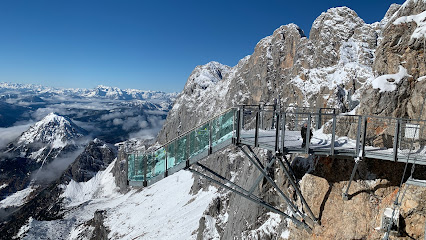
5 Fingers
Discover the stunning 5 Fingers Observation Deck in Austria's Dachstein mountains for breathtaking views and unforgettable experiences amidst nature's beauty.
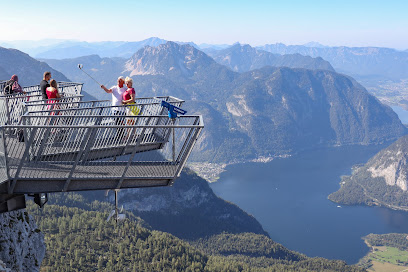
Dachstein Krippenstein
Explore the breathtaking beauty of Dachstein Krippenstein, a premier ski resort offering year-round adventures and stunning alpine views.
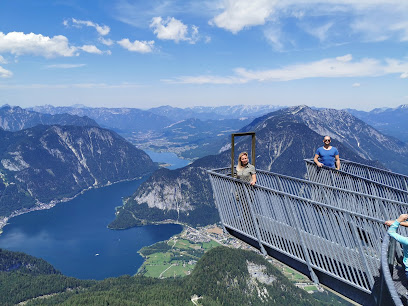
Dachstein-Gletscher (Schladming-Dachstein)
Discover the breathtaking Dachstein Glacier in Austria, a year-round alpine wonderland for hiking, skiing, and stunning panoramic views.
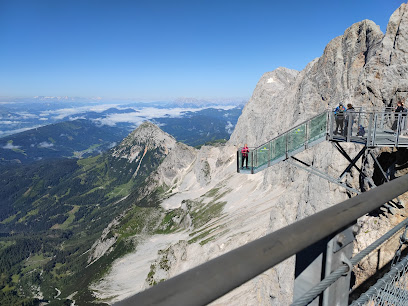
World Heritage Spiral (Welterbespirale)
Experience the breathtaking views of Austria's Hallstatt region from the World Heritage Spiral, a stunning observation deck offering unforgettable panoramas.
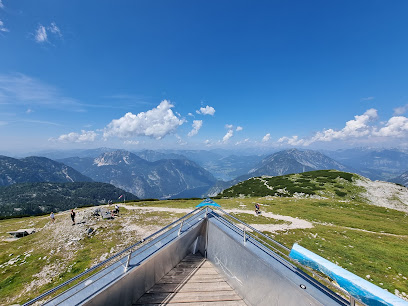
Hoher Dachstein
Explore the stunning Hoher Dachstein, an iconic mountain peak in Austria, offering breathtaking views, outdoor adventures, and rich alpine beauty.
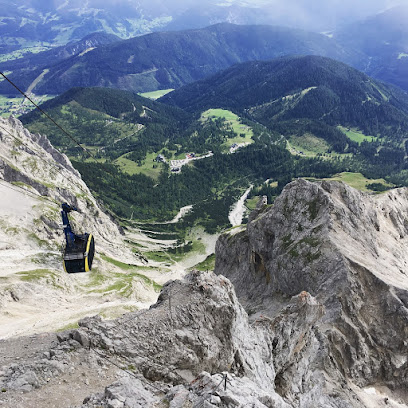
Dachstein Skywalk
Experience the breathtaking views and thrilling heights at the Dachstein Skywalk, a must-visit observation deck in the stunning Austrian Alps.
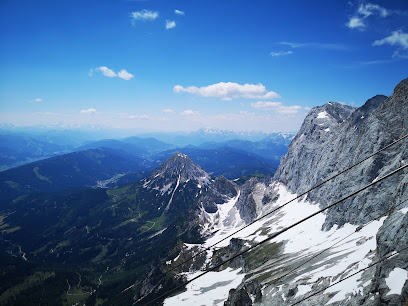
Eispalast Dachstein
Explore the enchanting Eispalast Dachstein, an ice palace filled with breathtaking sculptures and stunning glacier formations in the heart of the Austrian Alps.
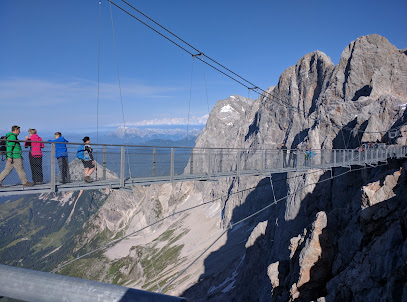
Dachstein Giant Ice Cave
Discover the enchanting Dachstein Giant Ice Cave in Austria, where nature's ice sculptures create a breathtaking underground wonderland.
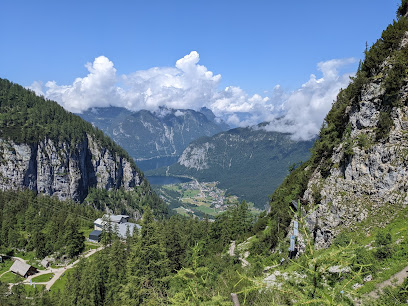
Dachstein Hängebrücke
Discover breathtaking views and thrilling heights at the Dachstein Hängebrücke, the world's longest suspension footbridge in the heart of the Austrian Alps.
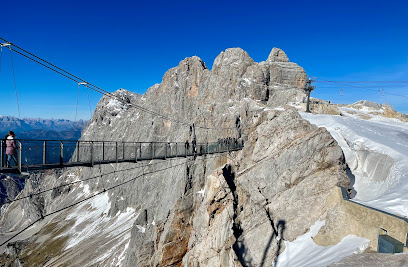
Dachstein Shark
Experience breathtaking views and thrilling adventures at Dachstein Shark, one of Austria's must-visit tourist attractions in the heart of the Alps.
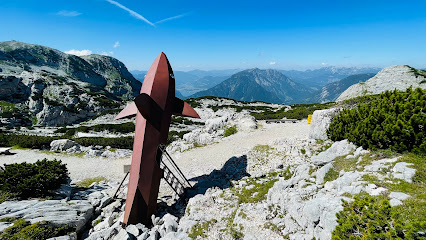
Dachstein glacier
Explore the breathtaking Dachstein Glacier, a stunning natural wonder in Austria perfect for outdoor adventures and serene escapes amidst the Alps.
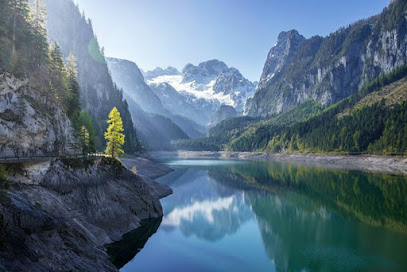
Dachsteingletscher
Explore the stunning Dachsteingletscher, an unforgettable glacier hiking area in Austria offering breathtaking views and diverse trails for all adventurers.
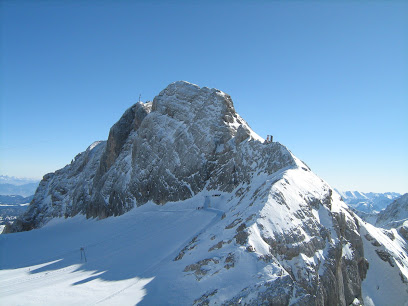
Berghöhle am Krippenstein
Explore the breathtaking Berghöhle am Krippenstein, an underground marvel in Obertraun, Austria, showcasing stunning formations and rich geological history.

Dreistein
Explore Dreistein, a serene wildlife refuge in Obertraun, where nature's beauty unfolds in vibrant landscapes and diverse wildlife encounters.
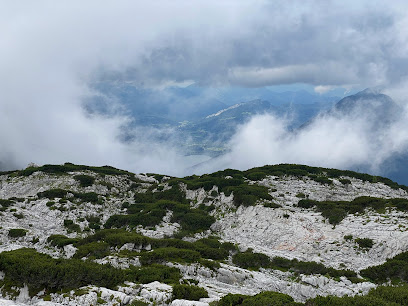
Unmissable attractions to see
Amusement park Rittisberg
Experience an exhilarating day of fun and adventure at Rittisberg Amusement Park, set against the stunning backdrop of Ramsau am Dachstein.

Dachstein Giant Ice Cave
Discover the breathtaking beauty of the Dachstein Giant Ice Cave, a natural wonder filled with stunning ice formations and rich geological history.
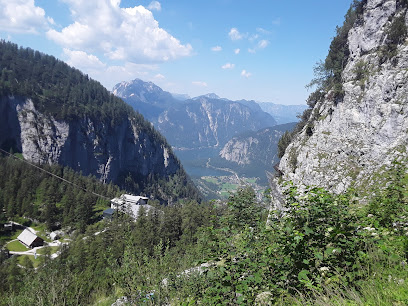
Koppenbrüller Cave
Discover the enchanting world of Koppenbrüller Cave, a stunning natural wonder in Austria's Dachstein region, perfect for adventurers and nature enthusiasts.
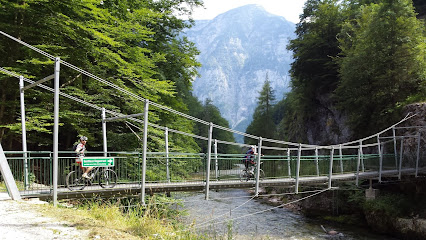
Dachstein Shark
Discover the breathtaking Dachstein Shark in Obertraun, a thrilling tourist attraction with stunning views and exciting alpine adventures.
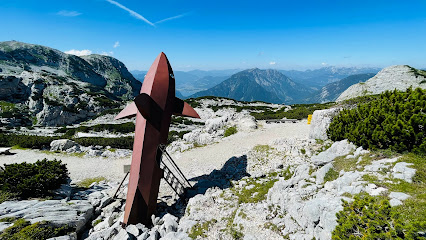
Hallstätter Wasserfall
Discover the enchanting Hallstätter Wasserfall, a stunning natural attraction in Hallstatt, Austria, surrounded by breathtaking alpine beauty.
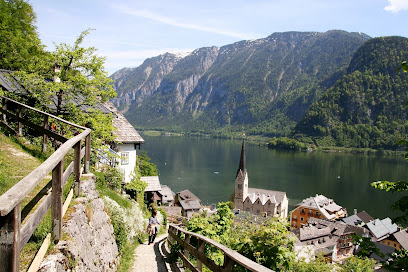
Löckermoos
Explore the breathtaking landscapes and rich biodiversity of Löckermoos, a hidden gem in Austria perfect for nature lovers and adventure seekers.
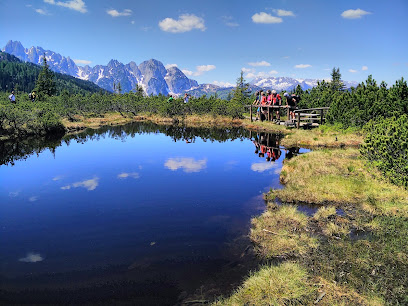
Hunerkogel
Experience the breathtaking beauty of Hunerkogel, a hiking area in the heart of the Austrian Alps, perfect for all outdoor enthusiasts and nature lovers.
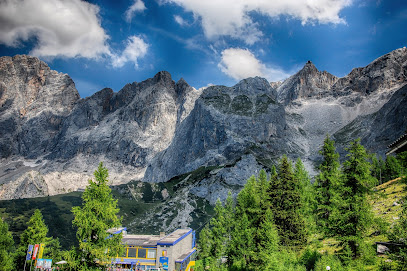
Dachsteinmuseum Austriahütte
Explore the cultural treasures and natural beauty at Dachsteinmuseum Austriahütte in Ramsau am Dachstein, a must-visit for every traveler.
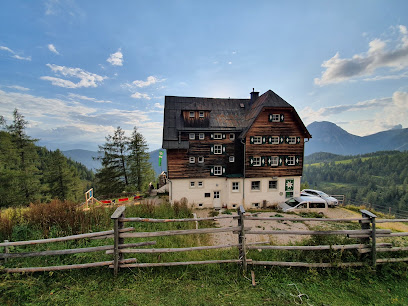
Museum Zeitroas
Explore the rich cultural heritage of Ramsau am Dachstein at Museum Zeitroas, a charming history museum showcasing local history and artifacts.
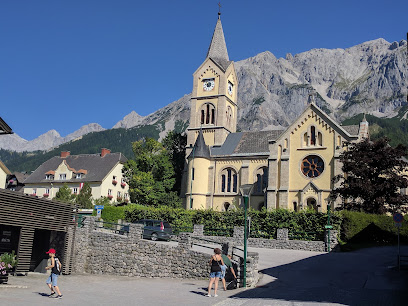
Austria Sky Ladder
Discover awe-inspiring views and adventure at the Austria Sky Ladder, a must-visit attraction in the heart of the Austrian Alps.
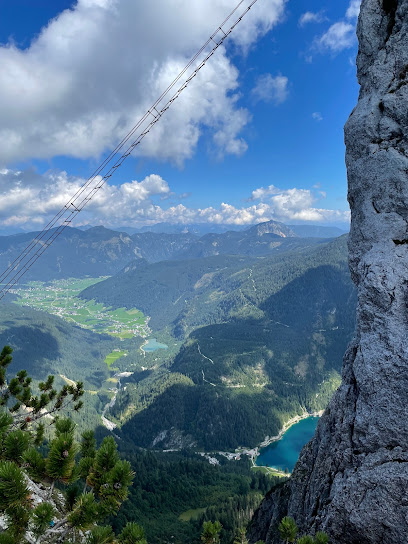
Dachstein-Kircherl
Discover the peace of Dachstein-Kircherl, a serene chapel in the heart of Ramsau am Dachstein, surrounded by breathtaking alpine beauty.
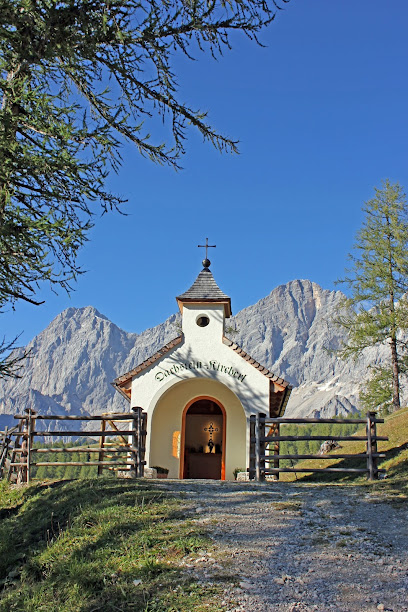
Dachsteingletscher
Explore the breathtaking beauty of Dachsteingletscher, a stunning hiking area in the heart of the Austrian Alps, offering unforgettable alpine adventures.
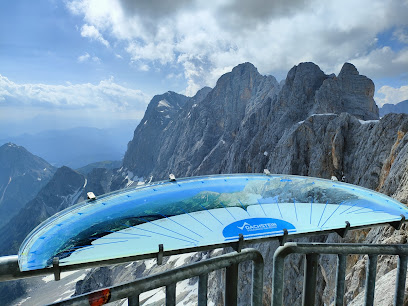
Dachstein Panorama View
Experience the breathtaking beauty of the Dachstein Panorama View, a must-visit destination for nature lovers in Obertraun, Austria.
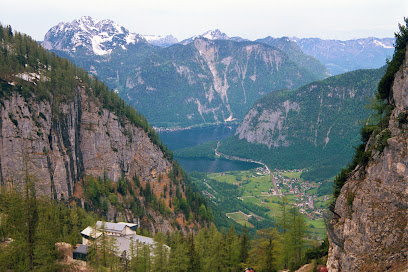
Berghöhle am Krippenstein
Discover the magical Berghöhle am Krippenstein, a stunning cave in Obertraun, showcasing breathtaking rock formations and natural beauty.
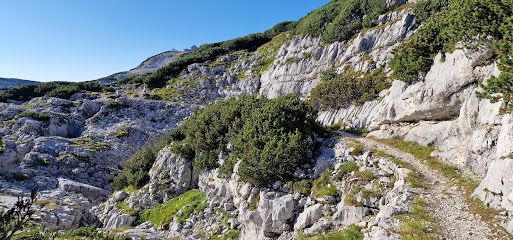
Dachsteinhöhlen
Discover the Dachsteinhöhlen, where stunning limestone caves and natural beauty await in the heart of Austria's Salzkammergut region.
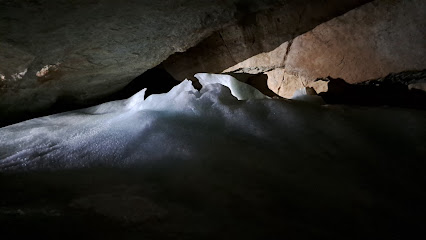
Essential places to dine
Waldschenke Ramsau
Discover authentic Austrian flavors at Waldschenke Ramsau - your ultimate dining experience in the stunning backdrop of Ramsau am Dachstein.
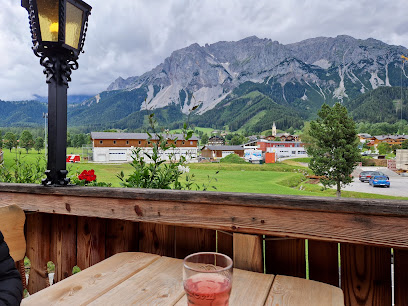
Rudolfsturm
Experience authentic Austrian cuisine with stunning mountain views at Rudolfsturm in Hallstatt.
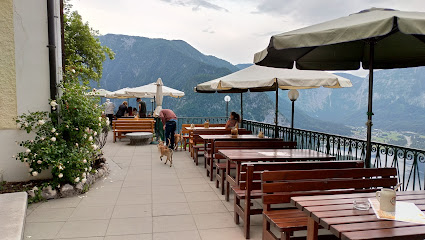
Cafe-Restaurant Walcher
Experience authentic Austrian cuisine in a cozy setting at Cafe-Restaurant Walcher with stunning mountain views in Ramsau am Dachstein.
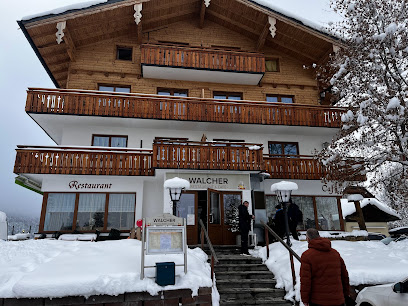
Dachstein Südwandhütte
Discover delightful brunch options at Dachstein Südwandhütte amidst stunning alpine views in Ramsau am Dachstein.

Alfredo´s Rostaria
Experience authentic Italian cuisine at Alfredo's Rostaria in Ramsau am Dachstein - where every meal is a celebration of flavor amidst stunning alpine views.
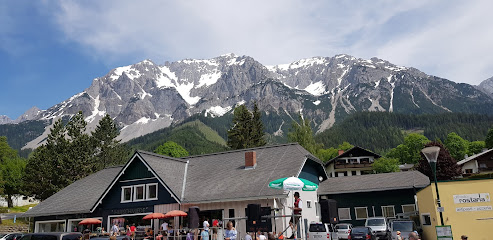
Alpengasthof Glösalm
Discover Alpengasthof Glösalm: A haven of authentic Austrian cuisine and stunning alpine adventures in the heart of nature.
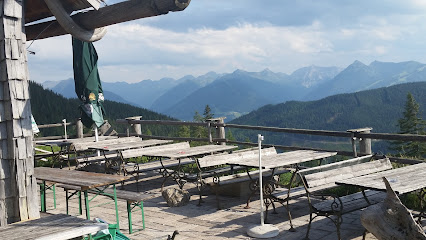
Alpengasthaus Edelbrunn
Experience authentic Austrian hospitality at Alpengasthaus Edelbrunn amidst breathtaking alpine scenery.
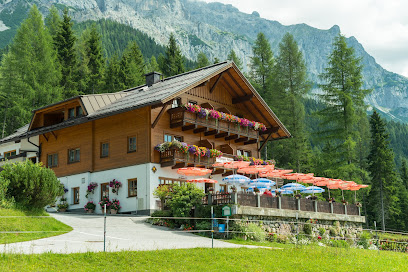
Waldcafé Lifstüberl
Discover culinary delights amidst breathtaking alpine scenery at Waldcafé Lifstüberl in Ramsau am Dachstein.

Ramsau Stub'n
Experience authentic Austrian cuisine amidst breathtaking alpine views at Ramsau Stub'n – your perfect dining retreat in Ramsau am Dachstein.
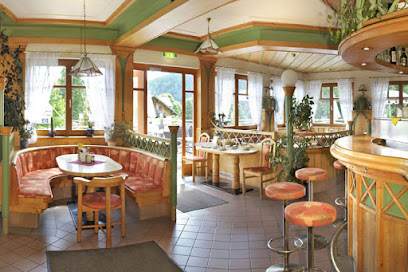
Bergrestaurant Dachstein Krippenstein
Experience authentic Austrian cuisine with breathtaking mountain views at Bergrestaurant Dachstein Krippenstein.
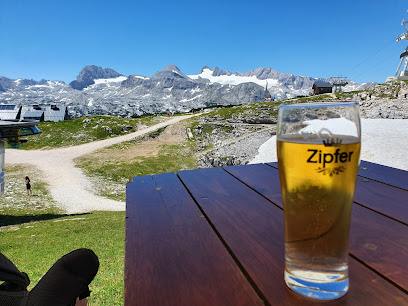
Gasthof Türlspitz
Discover Gasthof Türlspitz: A culinary gem in Ramsau am Dachstein offering traditional Austrian dishes amidst stunning mountain views.
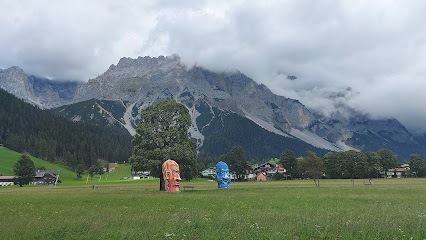
Lärchbodenalm
Experience authentic Austrian cuisine amidst breathtaking alpine views at Lärchbodenalm in Ramsau am Dachstein.
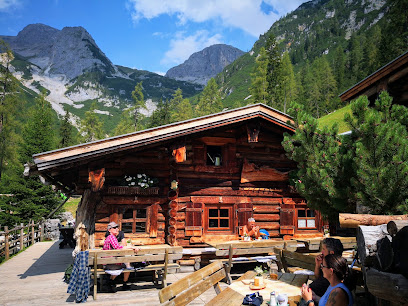
Ramsauer Tenne
Discover Ramsauer Tenne: A charming snack bar and event venue in Ramsau am Dachstein serving delightful local cuisine and refreshing drinks.
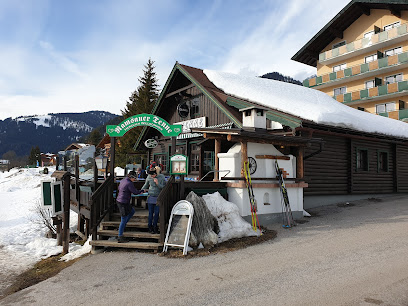
Dachstein Panoramarestaurant
Experience culinary excellence amidst breathtaking alpine views at Dachstein Panoramarestaurant.
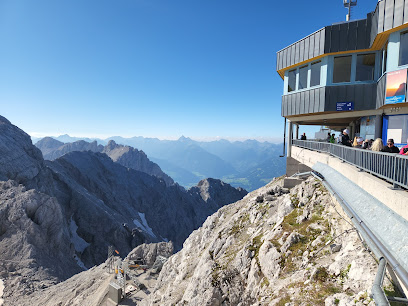
Gasthof Hunerkogel
Discover authentic Austrian cuisine and warm hospitality at Gasthof Hunerkogel, your perfect alpine getaway.
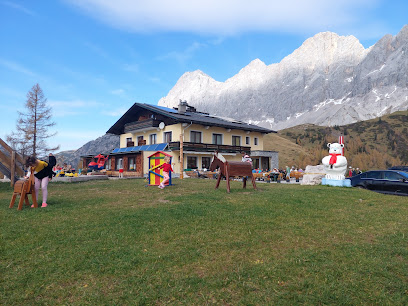
Markets, malls and hidden boutiques
SKI-WILLY
Discover SKI-WILLY: Your one-stop shop for high-quality sporting goods and expert advice in Ramsau am Dachstein, Austria.
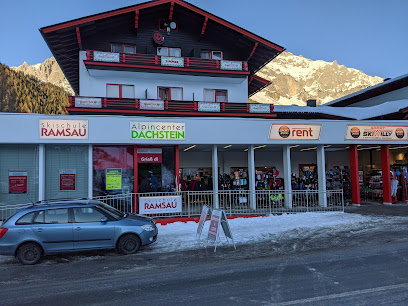
Supermarket Obertraun
Explore the diverse offerings at Supermarket Obertraun, where local flavors meet everyday convenience in the heart of Austria.
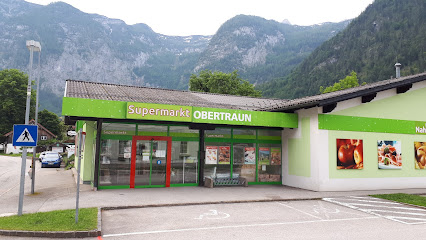
Dachstein Mountains
Explore the breathtaking Dachstein Mountains in Austria, a paradise for outdoor adventures and stunning natural landscapes.

INTERSPORT Bachler
Explore the Alps with confidence at INTERSPORT Bachler, your trusted partner for sporting goods, ski rentals, and outdoor adventure gear in Ramsau am Dachstein.
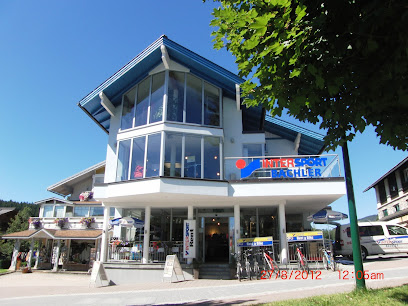
LIBRO
Explore LIBRO in Schladming for a delightful selection of gifts, toys, and stationery that captures the essence of Austrian charm.

Die Gemischtwarenhandlung
Experience the cozy charm of Die Gemischtwarenhandlung in Hallstatt, where delightful coffee and stunning views create unforgettable moments.
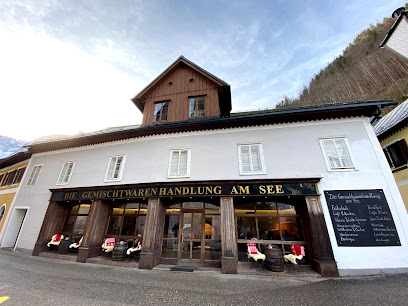
Dachsteinsport Janu
Discover the best sporting goods and ski rentals at Dachsteinsport Janu in Hallstatt, your adventure starts here in the heart of the Alps!
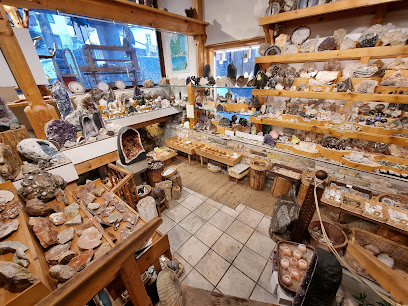
Cafe Bakeries Maislinger
Discover the charm of Obertraun at Cafe Bakeries Maislinger, where delicious pastries meet cozy ambiance in a stunning natural setting.
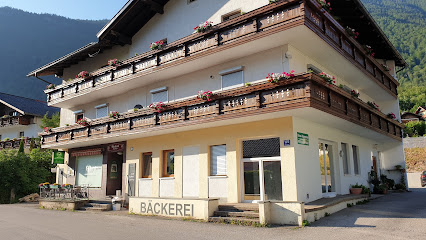
Geschenk's Platzerl
Explore Hallstatt's charm at Geschenk's Platzerl, a delightful gift shop filled with unique local crafts and unforgettable souvenirs.
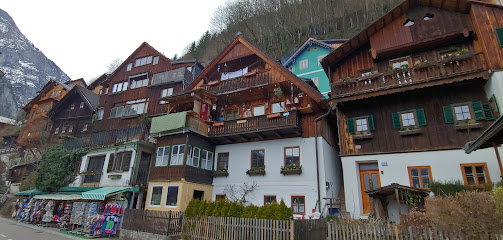
Kurt's Mammut Express
Discover authentic Austrian treasures and gear at Kurt's Mammut Express in scenic Obertraun, your gateway to the Dachstein wonders.
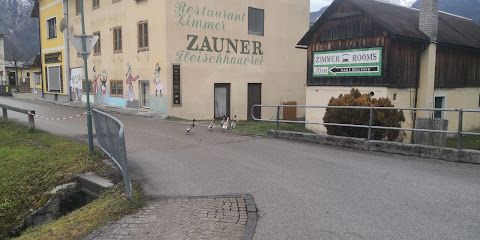
DAS SALZKONTOR - Hallstatt Seestrasse
Discover unique local treasures at DAS SALZKONTOR, a charming store in the heart of Hallstatt, Austria, surrounded by breathtaking beauty.

WM SHOP EDELWEISS
Uncover the charm of Schladming at WM SHOP EDELWEISS, where unique souvenirs and local treasures await every visitor.
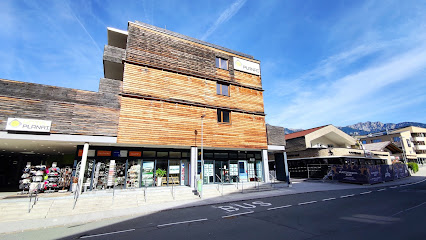
Salzkontor und Benediktiner Seifenmanufaktur
Explore Hallstatt's unique treasure trove of handcrafted soaps and salt products at Salzkontor und Benediktiner Seifenmanufaktur.
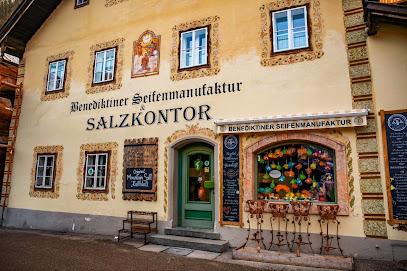
Hallstatt Keramik
Explore Hallstatt Keramik: A Treasure Trove of Handmade Pottery Reflecting Austria's Artistic Heritage.

Das Dirndl aus Hallstatt Dirndlschneiderei
Discover the rich tradition of Austrian dirndls at Das Dirndl aus Hallstatt, where craftsmanship meets cultural heritage in a picturesque setting.
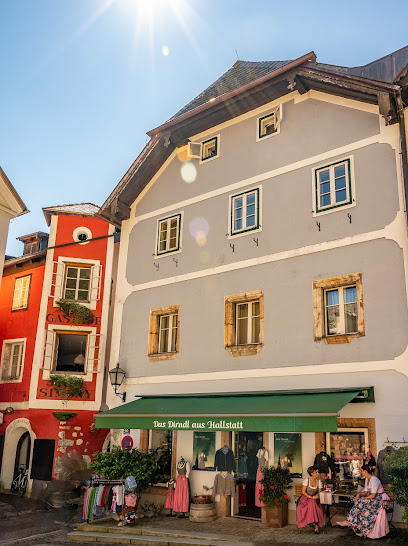
Essential bars & hidden hideouts
Hohenhaus Tenne Schladming
Hohenhaus Tenne Schladming: A dynamic bar and nightclub experience in the heart of the Austrian Alps, perfect for nightlife lovers and party-goers.
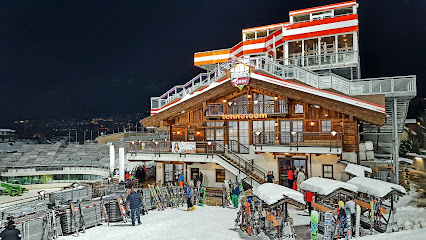
Schirmbar Hallstatt (Umbrella Bar Hallstatt)
Discover Schirmbar Hallstatt for stunning lakeside views and delightful local cuisine in the heart of Austria's picturesque Hallstatt.
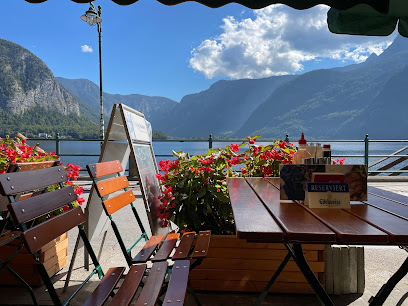
Hoo-Ruck Alm
Discover the charm of Hoo-Ruck Alm, a cozy bar in Schladming offering stunning mountain views and delicious local cuisine.
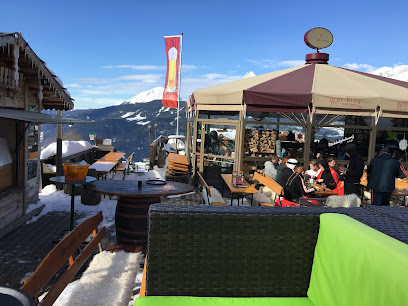
Bergrestaurant Dachstein Krippenstein
Experience exceptional local cuisine with breathtaking views at Bergrestaurant Dachstein Krippenstein in the heart of the Austrian Alps.
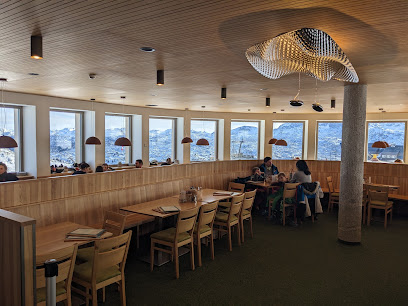
Moosalm
Discover the charm of Moosalm in Gosau, where local drinks and a cozy atmosphere await amidst stunning alpine views.

Gumpen Bar
Discover the charm of Gumpen Bar, a cozy retreat in Haus im Ennstal, offering local drinks, warmth, and alpine hospitality.
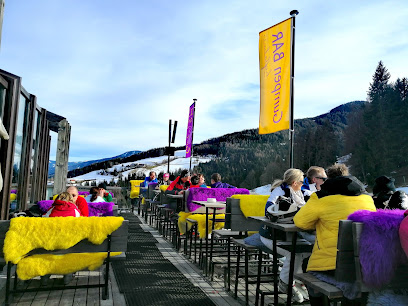
Siglu
Discover the lively bar scene at Siglu in Schladming, where great drinks and a vibrant atmosphere await you.
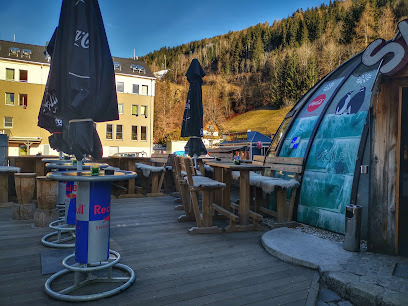
freeride-Bar
Experience the charm of Freeride-Bar in Annaberg im Lammertal - the perfect mountain retreat for relaxation and local flavors.
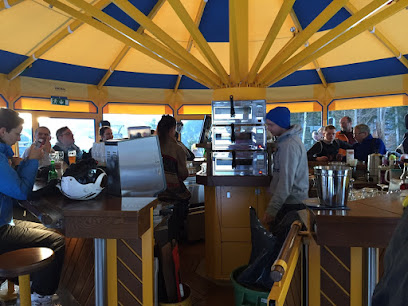
Szenario
Experience the vibrant nightlife of Schladming at Szenario, a stylish bar with a lively atmosphere and a diverse drink selection.
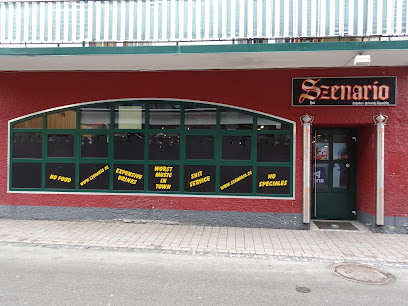
La Porta
Experience the vibrant nightlife at La Porta, the ultimate bar in Schladming for drinks, music, and unforgettable memories.
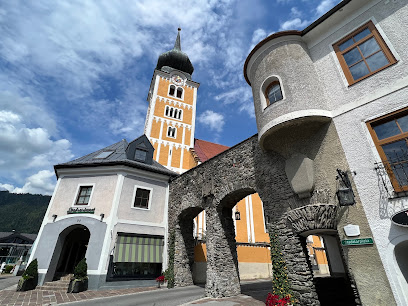
Hanglbar
Discover the lively ambiance and exceptional drinks at Hanglbar, the perfect nightlife destination in Schladming, Austria.
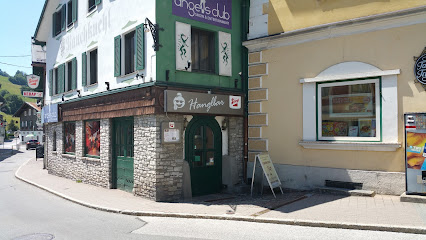
Almbar
Discover Almbar: A perfect blend of scenic beauty, cozy atmosphere, and refreshing drinks in Schladming, Austria.
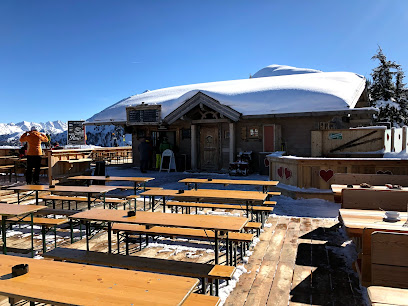
Andi's Schirmbar
Experience the vibrant après-ski culture at Andi's Schirmbar, a must-visit bar in Schladming offering great drinks and a friendly atmosphere.
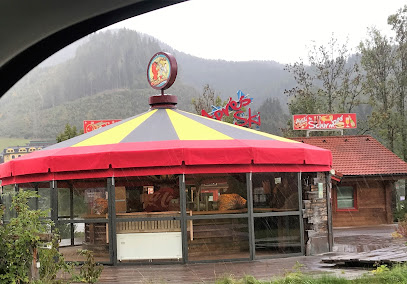
Schirmbar Gosauschmied
Discover the charm of Schirmbar Gosauschmied in Gosau, Austria—where locals gather for great drinks and good times in a welcoming atmosphere.
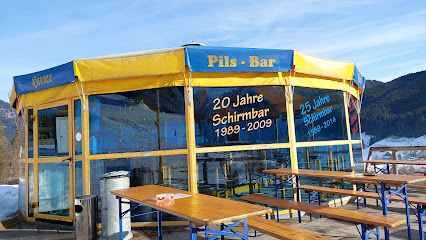
Casino JOKER'S
Discover Casino JOKER'S in Schladming for an exciting blend of gaming, sports, and family-friendly entertainment in a vibrant atmosphere.
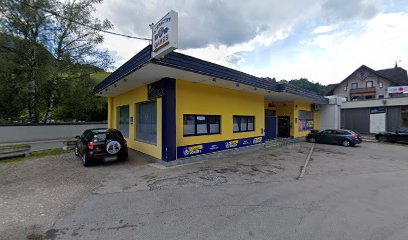
Local Phrases about Dachstein Mountains
-
- HelloServus
[servoos] - GoodbyeAuf Wiedersehen
[owf vee-der-zayn] - YesJa
[yah] - NoNein
[nyne] - Please/You're welcomeBitte
[bih-teh] - Thank youDanke
[dahn-keh] - Excuse me/SorryEntschuldigung
[ent-shool-dee-goong] - How are you?Wie geht es dir?
[vee gayt es deer] - Fine. And you?Gut. Und dir?
[goot oond deer] - Do you speak English?Sprechen Sie Englisch?
[spre-khen zee eng-leesh] - I don't understandIch verstehe nicht
[ikh fer-shtay-eh nikht]
- HelloServus
-
- I'd like to see the menu, pleaseIch hätte gerne die Speisekarte, bitte
[ikh het-eh gehr-neh dee shpy-zuh-kar-teh, bih-teh] - I don't eat meatIch esse kein Fleisch
[ikh ess-eh kine flysh] - Cheers!Prost!
[prohst] - I would like to pay, pleaseIch möchte bitte bezahlen
[ikh merkht-eh bih-teh beh-tsah-len]
- I'd like to see the menu, pleaseIch hätte gerne die Speisekarte, bitte
-
- Help!Hilfe!
[hil-feh] - Go away!Geh weg!
[geh vehg] - Call the Police!Rufen Sie die Polizei!
[roo-fen zee dee poh-lee-tsay] - Call a doctor!Rufen Sie einen Arzt!
[roo-fen zee i-nen ahrts] - I'm lostIch habe mich verirrt
[ikh hah-beh meekh feh-reert] - I'm illMir ist schlecht
[meer ist shlekh-t]
- Help!Hilfe!
-
- I'd like to buy...Ich möchte kaufen...
[ikh merkht-eh kow-fen] - I'm just lookingIch schaue nur
[ikh shou-eh noor] - How much is it?Wie viel kostet es?
[vee feel koss-tet es] - That's too expensiveDas ist zu teuer
[dahs ist tsoo toy-er] - Can you lower the price?Können Sie den Preis senken?
[kew-nen zee den prees zehn-ken]
- I'd like to buy...Ich möchte kaufen...
-
- What time is it?Wie spät ist es?
[vee shpet ist es] - It's one o'clockEs ist ein Uhr
[es ist iyn oor] - Half past (10)Halb elf
[hahlp elf] - MorningMorgen
[mor-gen] - AfternoonNachmittag
[nahkh-mit-tahg] - EveningAbend
[ah-bent] - YesterdayGestern
[gehs-tern] - TodayHeute
[hoy-teh] - TomorrowMorgen
[mor-gen] - 1Eins
[iyns] - 2Zwei
[tsvai] - 3Drei
[dry] - 4Vier
[feer] - 5Fünf
[fynf] - 6Sechs
[zeks] - 7Sieben
[zee-ben] - 8Acht
[ahkt] - 9Neun
[noyn] - 10Zehn
[tsehn]
- What time is it?Wie spät ist es?
-
- Where's a/the...?Wo ist ein/der...?
[vo ist iyn/dehr] - What's the address?Was ist die Adresse?
[vas ist dee ah-dreh-suh] - Can you show me (on the map)?Können Sie mir zeigen (auf der Karte)?
[kew-nen zee meer tsee-gen (ouf dehr kar-teh)] - When's the next (bus)?Wann kommt der nächste (Bus)?
[vahn komt dehr nekhs-teh (boos)] - A ticket (to ....)Eine Fahrkarte (nach ....)
[i-ne fahr-kahr-teh (nakh)]
- Where's a/the...?Wo ist ein/der...?
History of Dachstein Mountains
-
The Dachstein Mountains have been a haven for human activity since prehistoric times. Archaeological finds, including tools and artifacts, suggest that early humans settled in the region over 5,000 years ago. These ancient inhabitants utilized the natural caves for shelter and left behind a treasure trove of historical evidence.
-
During the Middle Ages, the Dachstein Mountains were a significant site for mining activities. The discovery of rich salt deposits led to the establishment of several mining operations. The Hallstatt salt mine, one of the oldest in the world, dates back to around 1,000 BC and continued to be a major economic driver throughout the medieval period.
-
The 19th century marked the beginning of Alpine tourism in the Dachstein region. Early adventurers and mountaineers were drawn to the area's dramatic landscapes and challenging peaks. The construction of the first mountain refuges and hiking trails made the Dachstein Mountains more accessible, paving the way for the thriving tourism industry seen today.
-
The Dachstein Mountains were not immune to the impacts of World War II. The region saw various military activities, including the establishment of hidden supply routes and the use of remote areas for training exercises. Following the war, significant efforts were made to rebuild and restore the area's infrastructure, allowing tourism to flourish once more.
-
In 1997, the Dachstein region, along with the Hallstatt-Dachstein/Salzkammergut Cultural Landscape, was designated a UNESCO World Heritage Site. This recognition highlighted the area's outstanding natural beauty and cultural significance, ensuring its preservation for future generations and cementing its status as a premier travel destination.
-
Today, the Dachstein Mountains are at the forefront of conservation efforts aimed at protecting their unique ecosystems. Sustainable tourism practices, wildlife protection programs, and environmental education initiatives are all part of ongoing efforts to preserve the natural beauty and biodiversity of the region.
Dachstein Mountains Essentials
-
The Dachstein Mountains are located in the Austrian Alps, primarily accessible from major cities such as Salzburg and Vienna. The nearest airport is Salzburg Airport, approximately 90 kilometers away. From Salzburg, you can take a train to the town of Schladming, which serves as a gateway to the Dachstein region. Alternatively, you can rent a car and drive, which offers the flexibility to explore the scenic routes at your own pace.
-
Public transportation in the Dachstein area is well-organized. Trains and buses connect the main towns and villages. The OEBB (Austrian Federal Railways) operates trains to Schladming and other nearby towns. Local buses serve the region, and taxis are also available. Renting a car gives you the freedom to explore remote areas and hidden gems. Cable cars and gondolas provide access to higher altitudes and popular attractions like the Dachstein Glacier.
-
The official currency in Austria is the Euro (EUR). Credit and debit cards are widely accepted in hotels, restaurants, and shops. However, it is advisable to carry some cash, especially when visiting smaller towns or rural areas. ATMs are available in most towns and villages, allowing you to withdraw money as needed. It is a good idea to notify your bank about your travel plans to avoid any issues with card transactions.
-
The Dachstein Mountains are generally a safe destination for tourists. Crime rates are low, but it is always wise to take standard precautions. Avoid leaving valuables unattended and be mindful of your belongings in crowded places. The region does not have specific high-crime areas targeting tourists. When hiking or skiing, always follow local safety guidelines and check weather conditions to avoid accidents.
-
In case of emergency, dial 112 for immediate assistance. This number connects you to emergency services, including police, fire, and medical help. Hospitals and clinics are available in larger towns like Schladming. It is highly recommended to have travel insurance that covers medical emergencies and evacuation. For minor health issues, pharmacies are available in most towns and can provide over-the-counter medications.
-
Fashion: Do wear appropriate outdoor clothing, especially when hiking or skiing. Layered clothing is advisable due to varying temperatures. Religion: Do respect local customs and traditions, particularly when visiting churches and religious sites. Public Transport: Do be respectful of fellow passengers. Don’t eat or drink on public transport. Greetings: Do greet people with a friendly 'Grüß Gott' (a common greeting in Austria). A handshake is also customary. Eating & Drinking: Do try local Austrian dishes and beverages. Don’t forget to tip, as it is customary to leave a small amount for good service.
-
To experience the Dachstein Mountains like a local, consider visiting during off-peak seasons to avoid crowds and enjoy a more authentic experience. Participate in local festivals and events to immerse yourself in the culture. Take advantage of the numerous hiking trails, ranging from easy walks to challenging climbs. Don’t miss the Dachstein Skywalk and Ice Palace for breathtaking views and unique experiences. Engage with locals, who are often friendly and willing to share insights about the region’s history and traditions.
Trending Landmarks in Dachstein Mountains
-
Treppe ins Nichts
-
5 Fingers
-
Dachstein Krippenstein
-
Dachstein-Gletscher (Schladming-Dachstein)
-
World Heritage Spiral (Welterbespirale)
-
Hoher Dachstein
-
Dachstein Skywalk
-
Eispalast Dachstein
-
Dachstein Giant Ice Cave
-
Dachstein Hängebrücke
-
Dachstein Shark
-
Dachstein glacier
-
Dachsteingletscher
-
Berghöhle am Krippenstein
-
Dreistein
Nearby Cities to Dachstein Mountains
-
Things To Do in Salzburg
-
Things To Do in Bad Gastein
-
Things To Do in Zell am See
-
Things To Do in Kitzbühel
-
Things To Do in Linz
-
Things To Do in Klagenfurt
-
Things To Do in Kranjska Gora
-
Things To Do in Bled
-
Things To Do in Bohinj
-
Things To Do in Graz
-
Things To Do in Český Krumlov
-
Things To Do in Škofja Loka
-
Things To Do in Kamnik
-
Things To Do in Velenje
-
Things To Do in Munich


